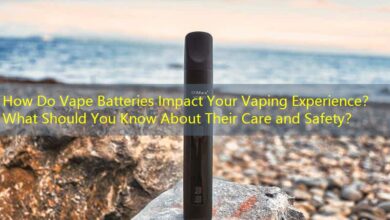Delta-8 vs Delta-9: Navigating the Cannabis Landscape with the Power of E-Cigarettes
Delta-8 vs Delta-9: A Comprehensive Overview
In the ever-evolving landscape of cannabis, two cannabinoids have garnered significant attention: Delta-8 and Delta-9 tetrahydrocannabinol (THC). While both compounds share similarities, they also possess distinct characteristics that can influence a consumer’s choice. This article aims to provide a detailed comparison of these two cannabinoids, discussing product specifications, advantages and disadvantages, and target audience analysis.
Product Overview

Delta-8 and Delta-9 THC are both forms of THC, the psychoactive component of cannabis. Delta-9 THC is the most recognized and abundant form, primarily responsible for the traditional “high” associated with marijuana use. Delta-8 THC, on the other hand, is present in smaller quantities in cannabis plants but has been gaining popularity as a legal alternative with milder psychoactive effects.
Products containing Delta-8 THC are often derived from hemp, making them federally legal under the 2018 Farm Bill, provided they contain less than 0.3% Delta-9 THC. Delta-9 THC products, primarily derived from marijuana, remain illegal in many states unless they come from licensed dispensaries in regulated markets.
Specifications and Dimensions
Both Delta-8 and Delta-9 THC are available in various forms, including oils, edibles, tinctures, and vape cartridges.
Delta-8 products typically come in:
– Oil tinctures: Commonly available in 15ml to 30ml bottles.
– Edibles: Gummies, chocolates, and other confections often contain 10mg to 25mg of Delta-8 per serving.
– Vape cartridges: Usually contain 1ml of oil, often with varying concentrations of Delta-8.
Delta-9 THC products are available in similar formats, but their concentration can be more potent, often exceeding the Delta-8 levels, making them more intense.
For both cannabinoids, the packaging often includes essential information regarding potency, serving size, and other relevant specifications to ensure consumer safety and product integrity.
Advantages of Delta-8
One of the primary advantages of Delta-8 THC is its legal status in many states, where Delta-9 remains illicit. This legality allows consumers to access products that offer many of the benefits associated with cannabinoids without the legal risks.
Additionally, users report that Delta-8 THC provides a milder psychoactive experience, leading to reduced anxiety and paranoia compared to Delta-9. Many users appreciate the smoother high, which can be more conducive to daily activities without significant impairment.
Disadvantages of Delta-8
Despite its advantages, Delta-8 THC is not without drawbacks. The most significant concern is that the regulatory framework around Delta-8 products is often lax, leading to variations in product quality and purity. Consumers may encounter products that are inaccurately labeled or contaminated with harmful chemicals.
Furthermore, due to its lower potency, consumers seeking a more substantial psychoactive effect may find Delta-8 insufficient for their needs.
Advantages of Delta-9
Delta-9 THC is known for its robust psychoactive effects, which many users seek for recreational and medicinal reasons. Its potency can provide significant relief from pain, nausea, and other medical conditions, making it a preferred option for those needing stronger therapeutic benefits.
Moreover, as Delta-9 THC is often derived from licensed dispensaries, regulated products typically adhere to stringent quality control standards, ensuring consistent dosing and reliable safety measures.
Disadvantages of Delta-9
On the contrary, Delta-9 THC comes with several disadvantages. Its legal status varies significantly across regions, and in many areas, it remains illegal. This can complicate access for consumers who may benefit from its properties.

Additionally, the high potency of Delta-9 THC can lead to adverse effects, including increased anxiety, paranoia, and impaired cognitive functioning. These side effects can discourage some users from choosing Delta-9 over other options.
Target Audience Analysis
The target audience for Delta-8 THC largely includes individuals seeking a milder, legal alternative to traditional cannabis products. This demographic often includes new cannabis users, individuals who may be sensitive to the effects of Delta-9, and those residing in states where Delta-9 remains illegal.
Conversely, Delta-9 THC appeals to seasoned cannabis users and those who rely on its robust effects for medical conditions. Consumers in this category are likely to be more knowledgeable about the cannabis industry and are seeking potent products for both recreational enjoyment and therapeutic purposes.
Conclusion
In summary, both Delta-8 and Delta-9 THC present unique opportunities and challenges for consumers in the cannabis market. Understanding the specifications, advantages, and disadvantages of each cannabinoid is essential for making informed choices. As the cannabis landscape continues to evolve, consumers must remain aware of changing regulations and new product offerings to navigate their options effectively.




